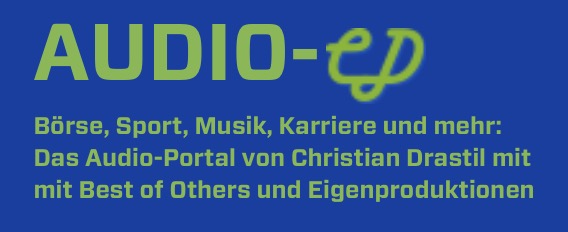19.02.2018, 4028 Zeichen
- Euro Area sustains the pace of its economic expansion: 0.6 % (q/q) GDP growth in Q4 2017.
- In 2017 the Austrian economy expanded by 3.1 % (y/y) surpassing Euro Area economic growth by 0.6 %-points.
The Euro Area’s economic expansion continues to follow a supportive trend. Last week’s Eurostat flash estimate of Gross Domestic Product (GDP) for Q4 2017 has confirmed the preliminary estimate of 0.6 % seasonally adjusted quarter-on-quarter (swda, q/q) growth. Compared to the fourth quarter of 2016, the Euro Area’s economy expanded by 2.7 % (swda, y/y) which translates into an annual growth rate of 2.5 % (swda, y/y) for the whole year of 2017.
Among the bigger Euro Area economies, the growth momentum during the fourth quarter of 2017 was broadly in line with the Euro Area average. The economic expansion continues to be broad based. Germany and France expanded by 0.6 % while the Spanish economy grew slightly above average at 0.7 % (swda, q/q). Only Italy continues to underperform with 0.3 % (swda, q/q) in Q4 2017.
In Austria, the economic expansion is in full swing and outperforms the Euro Area with growth at 0.7 % (swda, q/q). Economic growth continues to be supported by household consumption (1.4 %, y/y). Despite of continued strong export growth (7.3 %, y/y) the positive external effect has reduced significantly due to accelerated import growth (7.4 %, y/y). Investment growth remains robust being supported by a build-up of inventories with gross capital formation growth at 9.3 % (y/y) – Figure 1. While the Euro Area grew at 2.5 % in 2017, the Austrian economy expanded by 3.1 % (swda, y/y) compared to 2016.
CEE: the region shows continued growth momentum.
- Hungary surprised to the upside with year-on-year growth at 4.8 % (seasonally adj.) in Q4 2017.
- Romania was the fastest growing economy in 2017 with GDP growth at 6.9 % (y/y).
Besides the economies of the Euro Area, also the economies of Central and Eastern Europe (CEE) released flash estimates of GDP during the fourth quarter of 2017. Overall, the Q4 GDP estimates reflect the favorable economic conditions in the CEE region – Figure 2. Probably the biggest surprise was Hungary, where GDP expanded by 1.3 % (swda, q/q) compared to Q3 2017 and 4.8 % (swda, y/y) compared to Q4 2016. Romania, on the other hand, experienced a deceleration of economic growth with 0.6 % (q/q) GDP growth after a very strong third quarter at 2.4 % (q/q). Hence, Romania still has the highest year-on-year growth rate in the whole region at 7 % (Q4 17). The GDP growth figures of the Czech Republic (5.1 %, y/y), Poland (4.3 %), Slovakia (3.6 %) and Bulgaria (3.6 %) were all in-line with the growth acceleration during the previous quarters.
In Serbia, which reported 2.5 % (y/y, nsa) GDP growth during Q4, growth picked up from quarter to quarter starting at 1.1 % (y/y) in Q1 2017. For the total of last year, Serbia’s economy expanded by 1.8 %. In contrast to that year-on-year growth slowed down in Ukraine, reporting 1.8 % (nsa, y/y) growth in Q4 2017.
In 2017 economic growth was favorable, indeed. However, looking at long-term, or potential, growth also shows that the cyclical upswing in 2017 was not enough to push potential growth to levels seen before the financial crises – Figure 3. Even though, potential growth has accelerated recently none of the countries are projected to connect to the previous highs in growth potential. The IMF’s advice at the World Economic Forum in Davos to use the current favorable economic conditions to tackle existing structural weaknesses and, through this mechanism push potential growth, was, therefore, well placed. The latest Transition Report 2017-18 by the European Bank for Reconstruction and Development has identified similar challenges for the CEE region, arguing that economic growth based on technological transfer has come to an end. The region needs to implement a growth model based on innovative capability to escape the middle-income trap. Policy-makers would, therefore, be wrong to rest on current GDP data.

Karrieren & Kurse: Petra Plank, Mentorin für Beziehungsfähigkeit (und das Wifi Wien hat zwei Kurse dazu)
Bildnachweis
1.
Austria: Contributions to GDP growth
2.
CEE: Quarterly GDP growth in 2017
3.
Potential GDP Growth
4.
Interest Rates
Aktien auf dem Radar:Österreichische Post, FACC, Austriacard Holdings AG, Flughafen Wien, S Immo, Addiko Bank, Andritz, Rosenbauer, SBO, OMV, ams-Osram, AT&S, Gurktaler AG VZ, Polytec Group, Wiener Privatbank, SW Umwelttechnik, Oberbank AG Stamm, Agrana, Amag, CA Immo, Erste Group, EVN, Immofinanz, Kapsch TrafficCom, Telekom Austria, Uniqa, VIG, Wienerberger, Beiersdorf, Brenntag, Siemens.
Random Partner
RWT AG
Die Firma RWT Hornegger & Thor GmbH wurde 1999 von den beiden Geschäftsführern Hannes Hornegger und Reinhard Thor gegründet. Seitdem ist das Unternehmen kontinuierlich, auf einen derzeitigen Stand von ca. 30 Mitarbeitern, gewachsen. Das Unternehmen ist in den Bereichen Werkzeugbau, Formenbau, Prototypenbau und Baugruppenfertigung tätig und stellt des Weiteren moderne Motorkomponenten und Präzisionsteile her.
>> Besuchen Sie 68 weitere Partner auf boerse-social.com/partner



Latest Blogs
» Karrieren & Kurse: Petra Plank, Mentorin für Beziehungsfähigkeit (und da...
» Österreich-Depots: Wochenend-Bilanz (Depot Kommentar)
» Börsegeschichte 10.5.: Hans Haider, Erste Group, RBI, Lenzing (Börse Ges...
» Nachlese: RBI, Strabag und die Börsefolgen, Claudia Baumgartner (Christi...
» Wiener Börse am Fenstertagshandel Mittag stärker: Verbund, Do&Co, Polyte...
» Wiener Börse Party #647: ATX TR vor Rekord 3, Was blieb von RBI/Strabag ...
» Börsenradio Live-Blick 10/5: DAX sensationell, ,Zalando und Siemens Ener...
» Börse-Inputs auf Spotify zu u.a. Tesla, BVB, Claudia Baumgartner, Sportr...
» ATX-Trends: Post, Warimpex, Frequentis ...
» Börsepeople im Podcast S12/17: Claudia Baumgartner
Useletter
Die Useletter "Morning Xpresso" und "Evening Xtrakt" heben sich deutlich von den gängigen Newslettern ab.
Beispiele ansehen bzw. kostenfrei anmelden. Wichtige Börse-Infos garantiert.
Newsletter abonnieren
Runplugged
Infos über neue Financial Literacy Audio Files für die Runplugged App
(kostenfrei downloaden über http://runplugged.com/spreadit)
per Newsletter erhalten
| AT0000A2VYD6 | |
| AT0000A36XA1 | |
| AT0000A2WCB4 |
- Neue Bilder: Lara Hartmann ; Ursula Ressl; Christ...
- Rosenbauer und Mayr-Melnhof vs. RHI und voestalpi...
- Münchener Rück und AXA vs. Uniqa und Allianz – ko...
- Tele Columbus und Drillisch vs. Telecom Italia un...
- ArcelorMittal und ThyssenKrupp vs. Salzgitter und...
- Puma und Borussia Dortmund vs. World Wrestling En...
Featured Partner Video

Börsenradio Live-Blick, Do. 2.5.24: DAX leicht fester in den Mai, Bayer-Feier und Commerzbank mit Top-Timing
Christian Drastil mit dem Live-Blick aus dem Studio des Börsenradio-Partners audio-cd.at in Wien wieder intraday mit Kurslisten, Statistiken und News aus Frankfurt und Wien. Es ist der Podcast, der...
Books josefchladek.com

La Scène de la Locomotive à Vapeur
1975
Yomiuri Shimbun

The Burial Dress
2022
Self published

Berlin. Symphonie einer Weltstadt
1959
Ernst Staneck Verlag

Inside
2024
Muga / Ediciones Posibles

Index Naturae
2023
Skinnerboox







 Futures
Futures Carlos Alba
Carlos Alba Andreas H. Bitesnich
Andreas H. Bitesnich Martin Frey & Philipp Graf
Martin Frey & Philipp Graf Valie Export
Valie Export